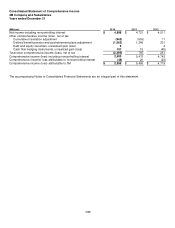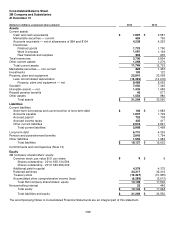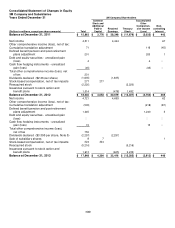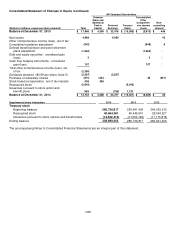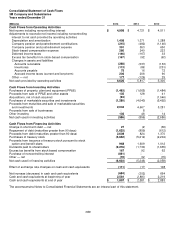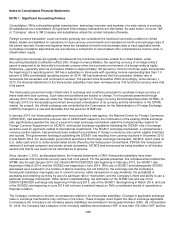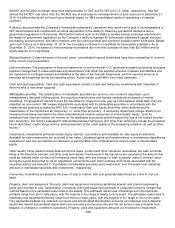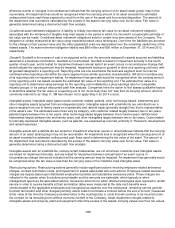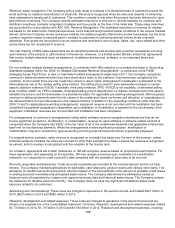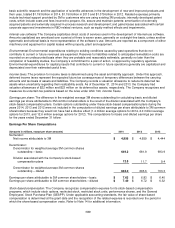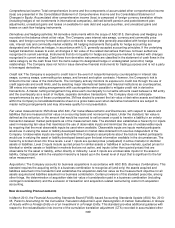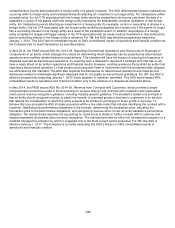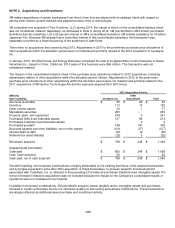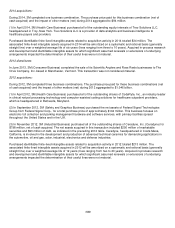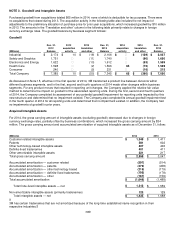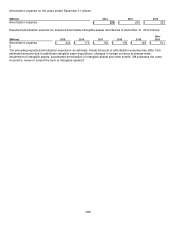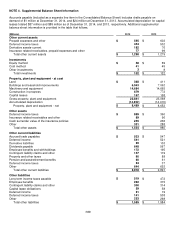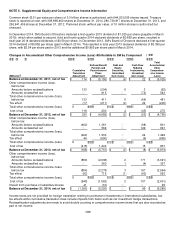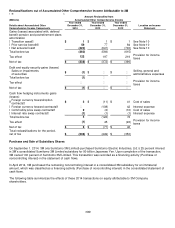3M 2014 Annual Report Download - page 63
Download and view the complete annual report
Please find page 63 of the 2014 3M annual report below. You can navigate through the pages in the report by either clicking on the pages listed below, or by using the keyword search tool below to find specific information within the annual report.57
Revenue (sales) recognition: The Company sells a wide range of products to a diversified base of customers around the
world and has no material concentration of credit risk. Revenue is recognized when the risks and rewards of ownership
have substantively transferred to customers. This condition normally is met when the product has been delivered or upon
performance of services. The Company records estimated reductions to revenue or records expense for customer and
distributor incentives, primarily comprised of rebates and free goods, at the time of the initial sale. These sales incentives
are accounted for in accordance with ASC 605, Revenue Recognition. The estimated reductions of revenue for rebates
are based on the sales terms, historical experience, trend analysis and projected market conditions in the various markets
served. Since the Company serves numerous markets, the rebate programs offered vary across businesses, but the most
common incentive relates to amounts paid or credited to customers for achieving defined volume levels or growth
objectives. Free goods are accounted for as an expense and recorded in cost of sales. Sales, use, value-added and other
excise taxes are not recognized in revenue.
The vast majority of 3M’s sales agreements are for standard products and services with customer acceptance occurring
upon delivery of the product or performance of the service. However, to a limited extent 3M also enters into agreements
that involve multiple elements (such as equipment, installation and service), software, or non-standard terms and
conditions.
For non-software multiple-element arrangements, in connection with 3M’s adoption on a prospective basis of Accounting
Standards Updated (ASU) No. 2009-13, Multiple-Deliverable Revenue Arrangements—a consensus of the FASB
Emerging Issues Task Force, to new or materially modified arrangements beginning in 2011, the Company recognizes
revenue for delivered elements when they have stand-alone value to the customer, they have been accepted by the
customer, and for which there are only customary refund or return rights. Arrangement consideration is allocated to the
deliverables by use of the relative selling price method. The selling price used for each deliverable is based on vendor-
specific objective evidence (VSOE) if available, third-party evidence (TPE) if VSOE is not available, or estimated selling
price if neither VSOE nor TPE is available. Estimated selling price is determined in a manner consistent with that used to
establish the price to sell the deliverable on a standalone basis. For applicable pre-existing arrangements, 3M recognizes
revenue for delivered elements when the fair values of the undelivered items are known and allocation of consideration to
the delivered items is most often based on the residual method. In addition to the preceding conditions under ASU No.
2009-13 and for applicable pre-existing arrangements, equipment revenue is not recorded until the installation has been
completed if equipment acceptance is dependent upon installation or if installation is essential to the functionality of the
equipment. Installation revenues are not recorded until installation has been completed.
For arrangements (or portions of arrangements) falling within software revenue recognition standards and that do not
involve significant production, modification, or customization, revenue for each software or software-related element is
recognized when the Company has VSOE of the fair value of all of the undelivered elements and applicable criteria have
been met for the delivered elements. When the arrangements involve significant production, modification or
customization, long-term construction-type accounting involving proportional performance is generally employed.
For prepaid service contracts, sales revenue is recognized on a straight-line basis over the term of the contract, unless
historical evidence indicates the costs are incurred on other than a straight-line basis. License fee revenue is recognized
as earned, and no revenue is recognized until the inception of the license term.
On occasion, agreements will contain milestones, or 3M will recognize revenue based on proportional performance. For
these agreements, and depending on the specifics, 3M may recognize revenue upon completion of a substantive
milestone, or in proportion to costs incurred to date compared with the estimate of total costs to be incurred.
Accounts receivable and allowances: Trade accounts receivable are recorded at the invoiced amount and do not bear
interest. The Company maintains allowances for bad debts, cash discounts, product returns and various other items. The
allowance for doubtful accounts and product returns is based on the best estimate of the amount of probable credit losses
in existing accounts receivable and anticipated sales returns. The Company determines the allowances based on
historical write-off experience by industry and regional economic data and historical sales returns. The Company reviews
the allowance for doubtful accounts monthly. The Company does not have any significant off-balance-sheet credit
exposure related to its customers.
Advertising and merchandising: These costs are charged to operations in the period incurred, and totaled $407 million in
2014, $423 million in 2013 and $482 million in 2012.
Research, development and related expenses: These costs are charged to operations in the period incurred and are
shown on a separate line of the Consolidated Statement of Income. Research, development and related expenses totaled
$1.770 billion in 2014, $1.715 billion in 2013 and $1.634 billion in 2012. Research and development expenses, covering




